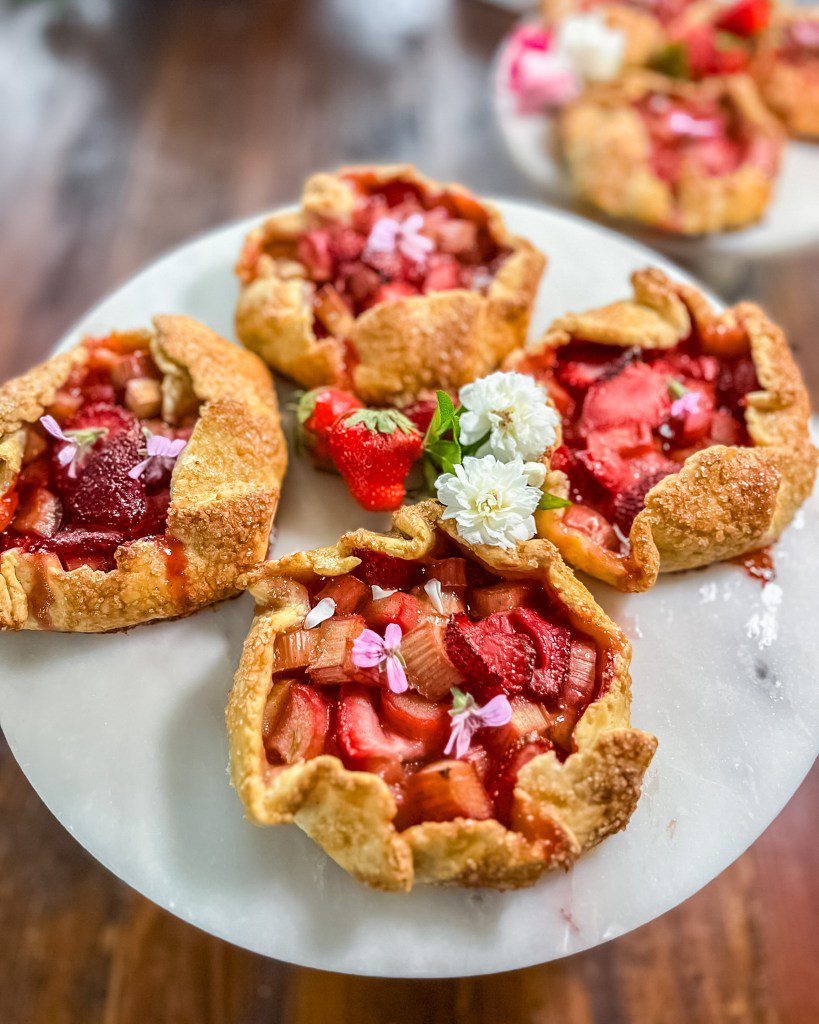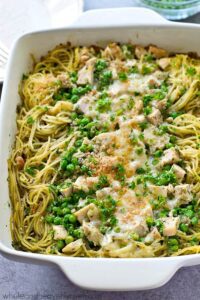Mini Lemon Cheesecakes a Bite Sized Burst of Sunshine is a delicious recipe that combines amazing flavors and textures.
Mini Lemon Cheesecakes capture the essence of sunshine in perfect bite-sized form—a delightful contrast of tangy, creamy filling and crisp, buttery crust. These individual desserts offer all the satisfaction of traditional cheesecake with the added benefits of portion control and easy serving. The bright lemon flavor cuts through the richness of the cream cheese, creating a balanced treat that feels both indulgent and refreshing.
What makes these mini cheesecakes exceptional is their perfect texture achieved through precise technique. The water bath method typical of full-sized cheesecakes isn’t necessary here because the small size allows for gentle, even cooking without cracking. Each component—from the properly compacted crust to the smoothly incorporated filling—contributes to the flawless final result. The lemon glaze adds both visual appeal and an extra burst of citrus flavor that elevates the entire experience.
The Science of Cheesecake Chemistry
Understanding the chemical interactions in cheesecake baking ensures consistent results. Cream cheese contains emulsifiers that help create smooth texture, but overbeating incorporates too much air that expands during baking then collapses during cooling, causing cracks. Eggs provide structure through protein coagulation—they set during baking, transforming the liquid filling into solid form.

The acid in lemon juice affects the dairy proteins, potentially causing curdling if not properly incorporated. This is why we add lemon juice at the end and mix gently. Sugar not only sweetens but also tenderizes by interfering with protein bonding. The flour acts as stabilizer, helping prevent excessive rising and falling that leads to cracking. These scientific principles guide our mixing techniques and ingredient proportions.
Selecting and Preparing Ingredients
Cream Cheese: Use full-fat block cream cheese rather than spreadable varieties, which contain stabilizers that can affect texture. Ensure proper softening at room temperature (about 2 hours) for smooth incorporation without lumps. Neufchâtel cheese can substitute with slightly lower fat content.
Lemons: Choose heavy, firm lemons with smooth skin—these tend to be juicier. Roll on counter before juicing to maximize yield. Zest before juicing to avoid difficult zesting of juiced lemons. Organic lemons are preferable since you’re using the zest.

Graham Crackers: For finest texture, pulse in food processor rather than crushing in bags. Alternatively, use pre-made crumbs. For variation, try ginger snaps, vanilla wafers, or shortbread cookies. Gluten-free crackers work well for dietary restrictions.
Eggs: Use large eggs at room temperature for best incorporation. Cold eggs can cause the cream cheese to seize and create lumps. To quickly bring eggs to room temperature, place in warm water for 5-10 minutes.
Technique Mastery for Perfect Results
Proper technique separates good cheesecake from exceptional. When making the crust, press firmly to create a compact base that won’t crumble when eaten. Use a small glass or measuring cup with straight sides for even pressure. Pre-baking the crust prevents sogginess and provides structural integrity.

When preparing filling, beat cream cheese until completely smooth before adding other ingredients. Scrape bowl frequently to ensure no lumps remain. Add eggs one at a time, mixing just until incorporated—overmixing incorporates too much air. Finally, stir in lemon juice by hand to prevent curdling. Fill liners almost to the top as cheesecakes don’t rise significantly.
Flavor Development and Variations
The basic recipe provides a perfect canvas for creative variations. Consider these flavor enhancements: (1) Add 1/2 cup blueberry or raspberry puree swirled into filling. (2) Replace lemon with lime for key lime version. (3) Add 1/2 teaspoon almond extract for nutty complexity. (4) Incorporate ginger or lavender for sophisticated twists.
For crust variations, try adding toasted coconut, ground nuts, or spices to the crumb mixture. For filling additions, fold in white chocolate chips, crushed cookies, or fresh berries. For alternative glazes, consider passion fruit, mango, or raspberry instead of lemon. A simple dusting of powdered sugar works beautifully for simpler presentation.

Structural Considerations and Problem Solving
Mini cheesecakes commonly suffer from few issues due to their size, but understanding potential problems ensures perfect results. If centers sink significantly, the cheesecakes may be underbaked—they should jiggle slightly but not appear liquidy. If tops crack, the oven temperature may be too high or the batter overmixed.
To prevent sticking, use quality paper liners and consider spraying lightly with cooking spray. If crusts become too hard, reduce pre-bake time or add slightly more butter to the crumb mixture. For creamier texture, ensure all ingredients are at room temperature before mixing and avoid overbaking.
Presentation and Serving Suggestions
Presentation transforms these simple cheesecakes into elegant desserts. Use decorative liners for visual appeal. Pipe the glaze rather than drizzling for professional appearance. Garnish with edible flowers, mint sprigs, or candied lemon slices for special occasions.
Serve slightly chilled for best texture and flavor. Accompany with fresh berries, fruit compote, or whipped cream. For dessert platters, create variety with different glazes and garnishes. These mini cheesecakes also make exceptional additions to dessert tables at weddings, showers, or parties.
Storage and Preservation Methods
Proper storage maintains freshness and texture. Store covered in refrigerator for up to 5 days. For longer storage, freeze unglazed cheesecakes for up to 3 months. Place in single layer on baking sheet to freeze solid, then transfer to airtight container with parchment between layers. Thaw overnight in refrigerator before glazing and serving.
The crust may soften slightly during storage but remains delicious. If making ahead, prepare components separately—bake crusts and make filling, but assemble just before baking for crispest crust. The glaze is best applied shortly before serving to maintain appearance.
Nutritional Considerations and Modifications
While indulgent, these cheesecakes can be modified for various dietary needs. Reduce sugar by 25% without significantly affecting texture. Use reduced-fat cream cheese and sour cream for lower calorie version—though texture will be slightly less creamy.
For gluten-free needs, use gluten-free cookies or graham crackers for crust. For dairy-free, use plant-based cream cheese and sour cream alternatives. For egg-free, use commercial egg replacer—though texture will be denser. For sugar-free, use alternative sweeteners designed for baking.
The Cultural Context of Cheesecakes
Cheesecakes have ancient origins, with evidence of cheese-based desserts dating back to ancient Greece. The modern cream cheese-based version developed in the United States after the invention of cream cheese in the late 19th century. Individual portion desserts gained popularity in the mid-20th century with the rise of home entertaining.
The addition of lemon represents a particularly American innovation, reflecting the availability of citrus and the preference for bright, bold flavors. The miniaturization trend aligns with contemporary eating patterns that value portion control and variety. This evolution demonstrates how classic dishes adapt to changing tastes and lifestyles.
Final Thoughts
Mini Lemon Cheesecakes represent more than just a dessert—they embody the joy of creating something beautiful and delicious to share with others. The process of making these perfect little treats provides satisfaction beyond the eating experience. May they bring sunshine to your table and become a cherished part of your dessert repertoire for years to come.

Mini Lemon Cheesecakes a Bite Sized Burst of Sunshine
Ingredients
Method
- Preheat oven to 325°F and line muffin tin with paper liners
- Combine graham crumbs, sugar, and melted butter
- Press 1 heaping tablespoon into each liner, using a glass to compact
- Bake for 5 minutes, then cool while preparing filling
- Beat cream cheese until completely smooth
- Add sugar and beat until combined
- Add eggs one at a time, beating just until incorporated
- Mix in sour cream, flour, and vanilla
- Stir in lemon zest and juice by hand until just combined
- Divide filling among crusts, filling almost to top
- Bake for 18-22 minutes until edges are set but centers still jiggle slightly
- Cool in pan for 30 minutes, then transfer to refrigerator
- Chill for at least 4 hours or overnight before glazing
- Whisk together confectioners’ sugar, lemon juice, and zest
- Adjust consistency with more sugar or juice as needed
- Drizzle over chilled cheesecakes
- Garnish with thin lemon slices if desired
- Store refrigerated for up to 5 days


